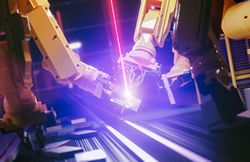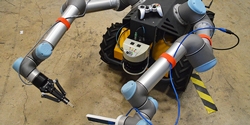How Are Robots Tested for Harsh Conditions?
Advanced robots can spare human workers from dangerous or life-threatening conditions and environments - like the intricate underwater terrain of a search-and-rescue mission or extreme pressures faced by oil and gas workers. Robots aren't invincible, however, and they need to be carefully designed to handle these extreme conditions. Here are some of the extreme environments that robots face - and how designers test them
University of Texas "opens Doors" to Safer Nuclear Waste Retrieval
The Nuclear and Applied Robotics Group, based in the University of Texas at Austin, has a mission to "develop and deploy advanced robotics in hazardous environments to minimize risk for the human operator."
How Robots Are Changing Nuclear Disaster Protocols
Despite modern advancements, a great deal of robots, such as the one deployed to Fukushima in March 2017, have died as a result of the high radiation levels.
Records 1 to 3 of 3
Featured Product

ResinDek® TRIGARD® ESD ULTRA FOR HIGH-TRAFFIC ROBOTIC APPLICATIONS
To maximize the productivity of an autonomous mobile robot (AMR) or automatic guided vehicle (AGV) deployment, it's critical to create the optimal environment that allows the vehicles to perform at their peak. For that reason, Cornerstone Specialty Wood Products, LLC® (www.resindek.com) created the TriGard® ESD Ultra finish for its ResinDek® engineered flooring panels. The TriGard ESD Ultra finish is ideal for high-traffic robotic applications characterized by highly repetitive movement patterns and defined travel paths.



